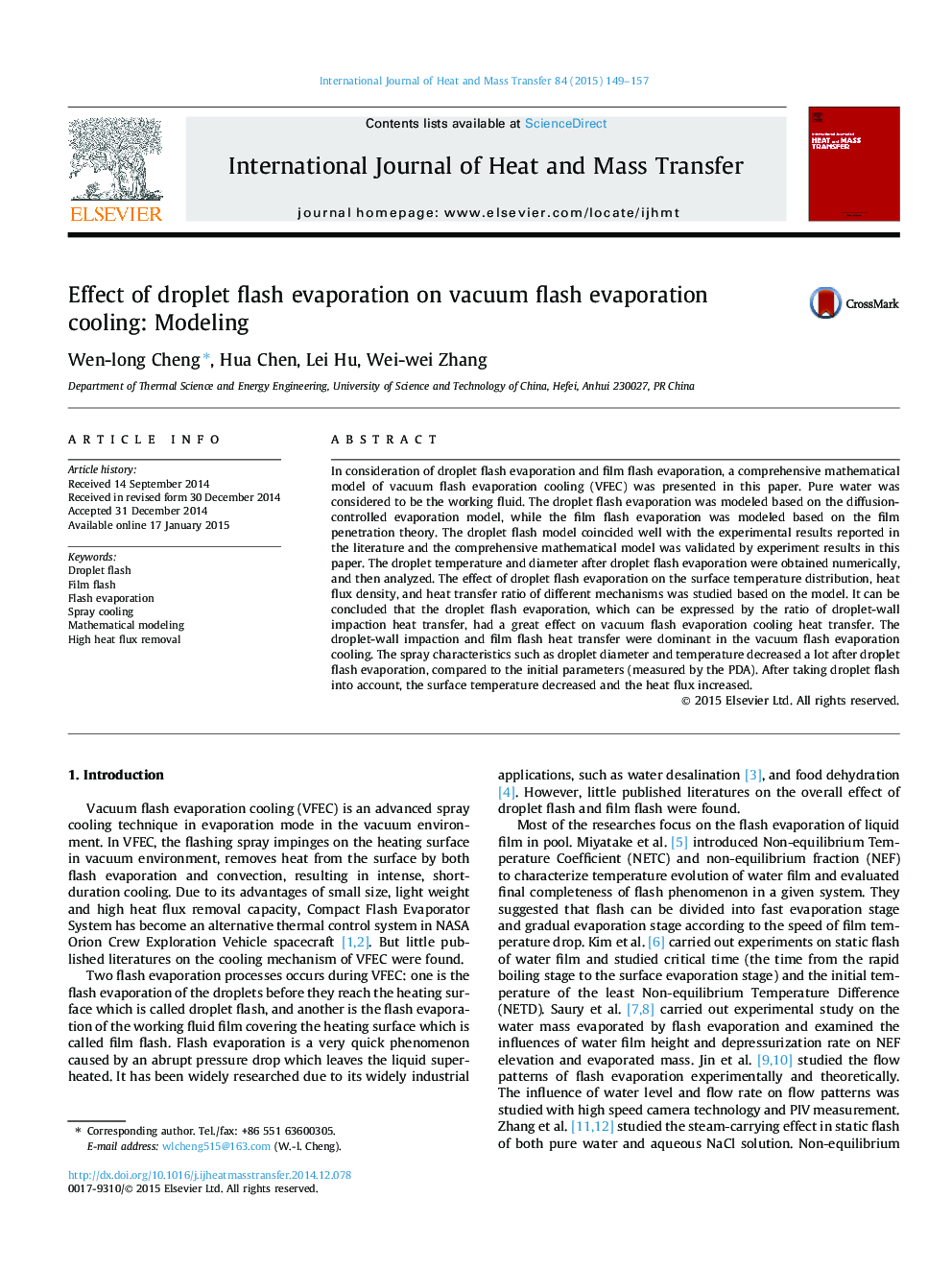| Article ID | Journal | Published Year | Pages | File Type |
|---|---|---|---|---|
| 656908 | International Journal of Heat and Mass Transfer | 2015 | 9 Pages |
Abstract
In consideration of droplet flash evaporation and film flash evaporation, a comprehensive mathematical model of vacuum flash evaporation cooling (VFEC) was presented in this paper. Pure water was considered to be the working fluid. The droplet flash evaporation was modeled based on the diffusion-controlled evaporation model, while the film flash evaporation was modeled based on the film penetration theory. The droplet flash model coincided well with the experimental results reported in the literature and the comprehensive mathematical model was validated by experiment results in this paper. The droplet temperature and diameter after droplet flash evaporation were obtained numerically, and then analyzed. The effect of droplet flash evaporation on the surface temperature distribution, heat flux density, and heat transfer ratio of different mechanisms was studied based on the model. It can be concluded that the droplet flash evaporation, which can be expressed by the ratio of droplet-wall impaction heat transfer, had a great effect on vacuum flash evaporation cooling heat transfer. The droplet-wall impaction and film flash heat transfer were dominant in the vacuum flash evaporation cooling. The spray characteristics such as droplet diameter and temperature decreased a lot after droplet flash evaporation, compared to the initial parameters (measured by the PDA). After taking droplet flash into account, the surface temperature decreased and the heat flux increased.
Related Topics
Physical Sciences and Engineering
Chemical Engineering
Fluid Flow and Transfer Processes
Authors
Wen-long Cheng, Hua Chen, Lei Hu, Wei-wei Zhang,
